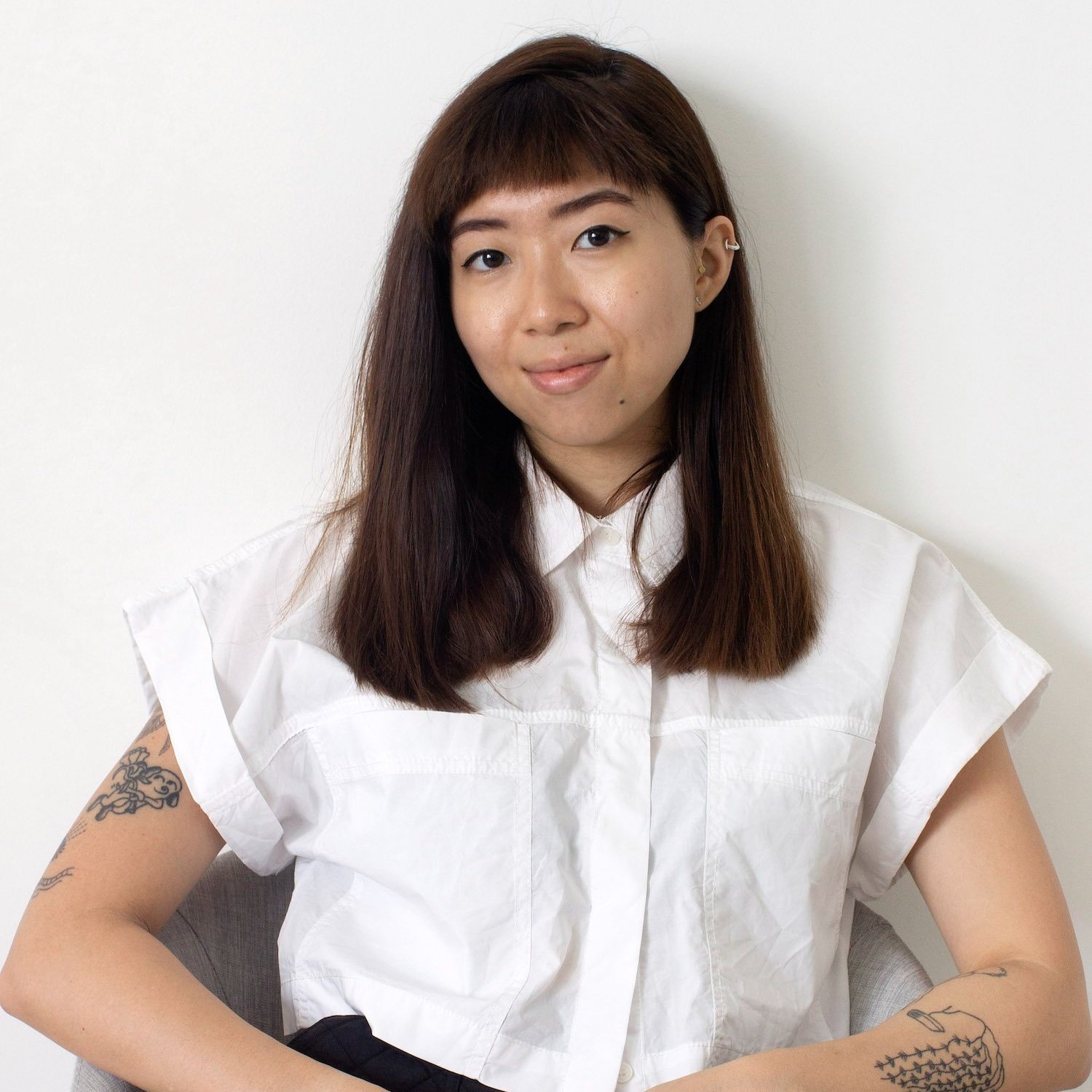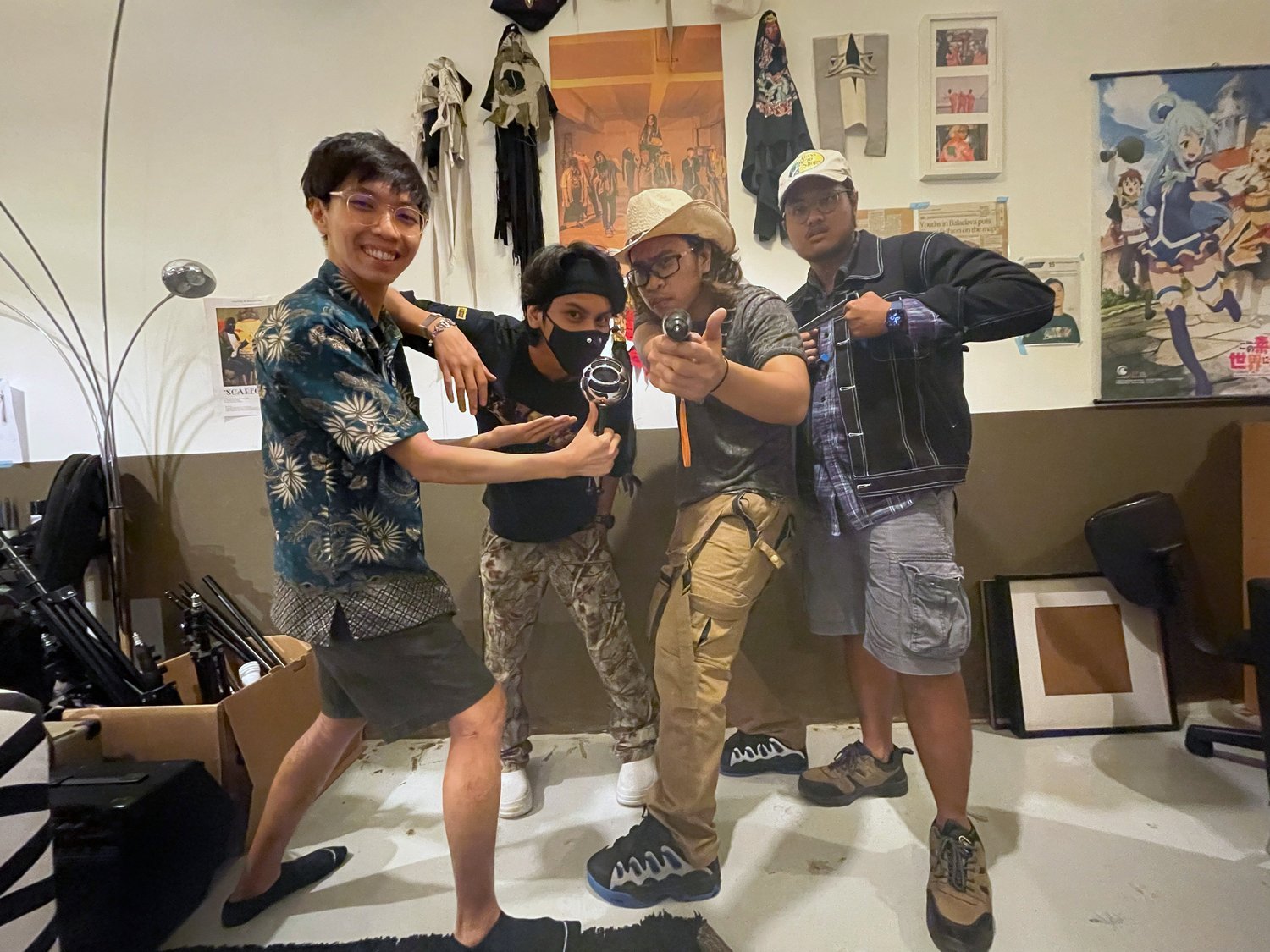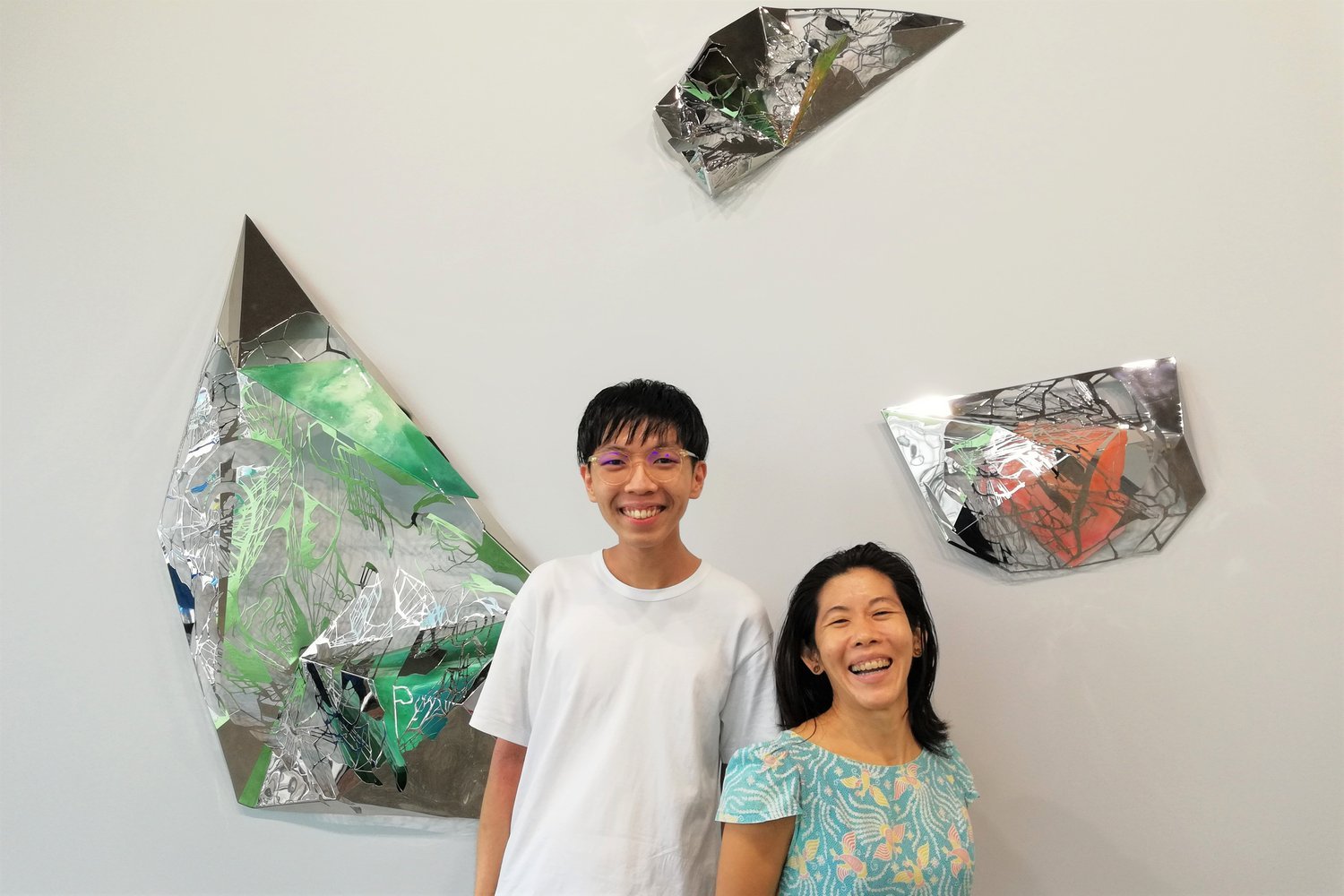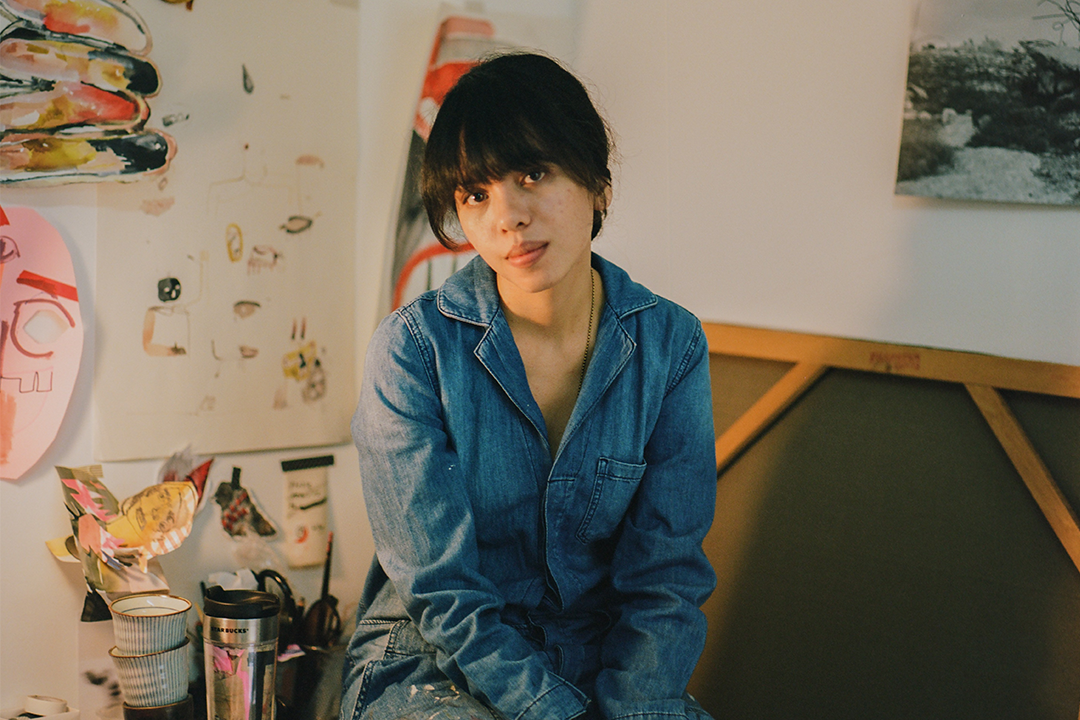Fresh Faces: Mimi Salibio
Embroidery, abstraction and oppositions
By Vivyan Yeo
A&M's Fresh Faces is where we profile an emerging artist from the region every month and speak to them about how they kick-started their career, how they continue to sustain their practice and what drives them as artists. Read our profile on Mimi Salibio here.
Photograph of Mimi Salibio. Image courtesy of the artist.
Could you talk about your background? At what point in your life did you decide to pursue a career in art?
When I was a painting major student, I already knew that I wanted to be an exhibiting artist. My seniors often invited me to participate in group exhibitions, where I was exposed to a wide array of artworks by students and professionals. Besides working on these exhibitions, I took on commissions to keep financially afloat. This included creating portraits, doing graphic design, being an assistant photographer for social events, and working as a studio assistant for artist Sir Mark Justiniani.
Mimi Salibio, ‘Passing God’, 2015, thread and silk. Image courtesy of the artist.
Mimi Salibio, 2016, ‘Cushion of the Grass’, thread on canvas, 47.5 x 61cm. Image courtesy of the artist.
Looking at your artistic output thus far, what was one pivotal early work?
In 2015, I decided to explore hand embroidery techniques and I created two important works. The first is ‘Passing God’ (2015), a small triptych that took me half a year to accomplish. For that work, I sewed horizontally with thread and silk. The second piece, ‘Cushion of the Grass’ (2016), took me a month to complete. This was when I expanded my library of hand embroidery techniques to include eastern and western methods, shifting from simple long and short stitches to complex stitches.
Who has been a mentor or an important artistic influence?
An important influence is Italian artist Giovanni Anselmo. I am deeply enamoured by his works ‘Senza titolo (Scultura che mangia)’ (1968) and ‘Respiro (Breathing)’ (1969). I find his manipulation, juxtaposition, and presentation of commonplace objects thought-provoking.
What was one crucial piece of advice you were given?
My science teacher in high school once said, “the only permanent thing in this world is change”. Whether in art or life, change is inevitable.
Mimi Salibio, ‘Locker’, 2022, thread on canvas, 90 x 121cm. Image courtesy of the artist.
Mimi Salibio, detail of ‘Locker’, 2022. Image courtesy of the artist.
You recently had a solo presentation, ‘Softest Gravel’ (2022), organised by Art Underground Manila as part of Art Fair Philippines. Could you talk about the exhibition premise and your process of preparing for it?
I often juxtapose or manipulate two materials with polarising qualities and present them within one artwork. This is my attempt to defamiliarise them from their common conventions. I applied this approach through words in the exhibition title, ‘Softest Gravel.’ It took me almost a year to prepare for this show. With patience being the most important aspect, I produced numerous studies and colour schemes, sourced and dyed various materials, and laboriously stitched the works by hand.
Mimi Salibio, exhibition view of ‘Seabed’, canvas trimmings, fabric dye, and thread adhesive, 121.9 x 162.5cm. 2020-2021. Image courtesy of the artist.
Compared to your earlier figurative paintings, your recent tapestries build new realities of abstract forms. What are your thoughts on this transition?
Everyone creates according to their scope of knowledge and skill. As we progress in life, we gain new insights and, at the same time, abandon certain ideologies even if they have been our compass at some point in time. My artistic transition occurred when I finally reached my threshold in figurative painting. I found out that the activity no longer stimulated me, especially since I had been doing it for so many years, including my time in the academy.
My first encounter with abstraction brought me a sense of alienation, so I did not bother to explore the theme then. But as I discovered different artists and their contexts, I came to appreciate abstraction. At the same time, I found themes such as absurdity, comedy, and mundanity rather interesting. I also concluded that abstraction is audience-centric; it allows the viewers to think and freely interpret artworks in their way. This idea resonated with me as the audience has always been vital in my art practice.
Mimi Salibio, ‘Absence of Shortcuts’, 2020, graphite, latex and acrylic on canvas, 50.8 x 50.8cm. Image courtesy of the artist.
Mimi Salibio, concrete sculpture from series ‘Imagined Seas’, 2019, 15.2 x 7.6 x 5cm, cement and crustacean shell. Image courtesy of the artist.
Contrasting ideas are an overarching theme in your artistic portfolio. In your solo exhibition ‘Squares and Quadrilaterals’ (2020) at White Walls gallery, you paired organic mediums like graphite and charcoal with synthetic materials such as latex and acrylic. How has the idea of oppositions influenced your practice?
This idea stems from Russian artist Kasimir Malevich’s treatise on Suprematism, ‘The Non-Objective World’, which emphasises the primacy of pure feeling through geometric shapes. In my exhibition ‘Squares & Quadrilaterals’, the grid motif signifies one of mankind’s greatest endeavours: the rapid development of infrastructure. With industrialisation in mind, I juxtaposed organic and synthetic materials to symbolise the divide between rural and urban civilisations.
This use of opposing materials can also be found in my other works. In the series ‘Imagined Seas’, I paired organic materials such as seashells and crustacean shells with the industrial medium of cement to create fifty small sculptures. Instead of providing a resolution, I try to pose a question for the audience to reflect upon: When and how will this unending divide between the rural and urban be reconciled? Is reconciliation really necessary?
Mimi Salibio, Detail of ‘Sansinukob sa Aking Kusina (Universe in my Kitchen)’, 2019, mixed media installation in the exhibition, ‘Sero’. Image courtesy of the artist.
From fish, hooks and video in ‘Harvest’ (2020) to charcoal, plaster and plastic containers in your solo exhibition ‘Sero’ (2019) at Art Underground Manila, you have worked with a wide array of materials in your career. What is your thought process when selecting these mediums?
There are two central influences in my art practice. One is Russian theorist Viktor Shklovsky’s concept of ’defamiliarisation’, which refers to the literary technique of presenting familiar objects in an unfamiliar way to reveal new perspectives. The other is the Italian art movement, arte povera. Literally meaning ‘poor art’, the movement explored a wide range of materials beyond the constraints of traditional practices.
Maybe that is why I am inclined to explore the concept of the everyday and present it in a different light. As part of my process, I study the intrinsic qualities of a particular material and its association with other materials. Sometimes, I look at their historical value. For instance, in ‘Sero’, I used charcoal because of its pivotal role in the Industrial Age. As technology developed, we can now build machines that can operate without charcoal. One of them is machinery for plastic containers, which are also present in ‘Sero’.
Mimi Salibio, ‘Harvest’, 2020, single-channel video and performance, 8 min 33 sec. Image courtesy of the artist.
Could you share your favourite art space in your country? Why are you drawn to that space?
As an art educator, I think the National Museum of the Philippines is a good starting point for students, individuals and the general public to enrich their knowledge of art history and production.
Besides that, the internet and hypermedia are helpful for artists who are facing difficulties in showcasing and selling their works to a wider audience. There are challenges to penetrating the art market; some artists have good networks while others have none. The internet is a good platform to highlight different processes inside an artist’s studio, showing audiences that art production is not as easy as it seems.
What are your hopes for your own local art scene and regionally?
It would be interesting to see the local and regional art scene thrive with a diverse collection of works. It could contain research-based or community-driven projects or perhaps artworks stimulating human senses. It could be anything really. I think exploring different ideas and materials is a very important endeavour.
This interview has been edited for clarity.




















